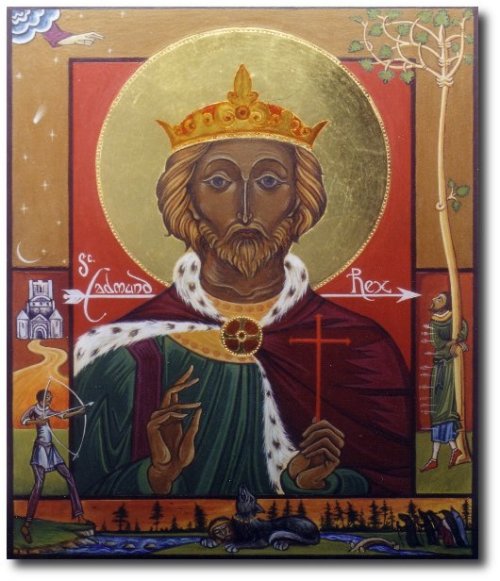In 1819, Kamehameha the Second, king of the recently-unified islands of Hawai’i, sat at table with several female relations in his court, effectively nullifying the elaborate religious system of kapu (taboo) that governed the day to day lives of Hawai’ians. This action brought about a crisis, as the king essentially overturned the traditional religious system by this simple act, leaving a void in Hawai’ian culture. Within only a few months, Christian (Congregationalist) missionaries arrived in Hawai’i from Boston aboard the Thaddeus. Stepping into the void created by Kamehameha’s rejection of traditional Hawai’ian religion, the missionaries commenced the Christian conversion of the Hawai’ian people.
Born in 1834, Alexander Liholiho was the grandson of Kamehameha the First, unifier of the Hawai’ian islands and a brutal, if effective, pagan ruler to whom Kamehameha the Second had succeeded. Alexander received his education from the Congregationalist missionaries at the Chiefs’ Children’s School (later the Royal School) in Honolulu. After his primary education, he received legal training. Named by his uncle, Kamehameha the Third, to succeed him as king, it was thought that the young now crown prince would benefit from foreign travel, and at the age of fifteen he and several companions toured the United States, the continent of Europe, and England. While in England, Prince Alexander attended services of the Church of England and was favorably impressed by the liturgy of the Book of Common Prayer, which stood in contrast to the austerity and extemporaneity of the Congregationalist services with which he was familiar at home.
In 1855, Alexander succeeded his uncle and took the oath as King Kamehameha the Fourth. A year after ascending the throne, Kamehameha married Emma Rooke, granddaughter of the British royal adviser to Kamehameha the First and great-grandniece of that king. Concerned about the growing influence of American missionaries in Hawai’i (a treaty to annex the Hawai’ian islands to the United States had been proposed during his uncle’s reign) and recalling his experience of Anglican liturgy while on his foreign tour a few years previously, the king and queen wrote to Queen Victoria, inviting the Church of England to send missionaries to his kingdom. Bishop Samuel Wilberforce recommended that the mission include a bishop who could organize the church in Hawai’i. With the approval of the Protestant Episcopal Church in the United States (prevented from providing any assistance by the outbreak of the War Between the States) and of the Archbishop of Canterbury, the mission was formed, and the Revd Dr Thomas Nettleship Stanley was consecrated a bishop for Hawai’i in Lambeth Chapel on the fifteenth of December, 1861. The new church was chartered as the Hawai’ian Reformed Catholic Church and became the official royal church of Hawai’i, with lands donated from the royal family’s own holdings.
Both the king and the queen were devoted to their people’s material and spiritual welfare. Kamehameha himself translated the Book of Common Prayer into Hawai’ian, adding a preface explaining “the new teaching”. Kamehameha and Emma were particularly concerned for the healthcare and education of their people. When the Hawai’ian legislature struck down an ambitious public healthcare agenda proposed by the king, the royal couple lobbied local businessmen, merchants, and other wealthy citizens to provide funds. Their efforts were overwhelmingly successful, and eventuated in the establishment Queen’s Hospital (now Queen’s Medical Center) in Honolulu, as well as a leprosarium for the treatment of leprosy patients on the island of Maui.
The royal couple’s only son, Albert, died at the age of four in 1862, and Kamehameha died the following year, on the thirtieth of November. Some eight hundred teachers and schoolchildren walked to pay their respects to their departed monarch, and the king was buried according to the rites of the 1662 Prayer Book, the liturgical standard for the Church of Hawai’i. Since Kamehameha had died on the feast of Saint Andrew, the first cathedral in Hawai’i, constructed under the sponsorship of his brother, King Kamehameha the Fifth, was named for and dedicated to that apostle. (The cathedral has served as the cathedral for the Episcopal Diocese of Hawai’i since the annexation of the islands to the United States.) Emma died in 1885, having dedicated the remaining years of her life to charitable endeavors.
prepared from various sources
The Collect
O Sovereign God, who raised up Kamehameha and Emma to be rulers in Hawaii, and inspired and enabled them to be diligent in good works for the welfare of their people and the good of your Church: Receive our thanks for their witness to the Gospel; and grant that we, with them, may attain to the crown of glory that never fades away; through Jesus Christ our Savior and Redeemer, who with you and the Holy Spirit lives and reigns, one God, for ever and ever. Amen.
__________________________________________________
The propers for the commemoration of Kamehameha and Emma, King and Queen of Hawai’i, are published on the Lectionary Page website.
The image above is of a stained glass window in Saint Andrew’s Cathedral, Honolulu, which includes Kamehameha and Emma in the lefthand panel.









